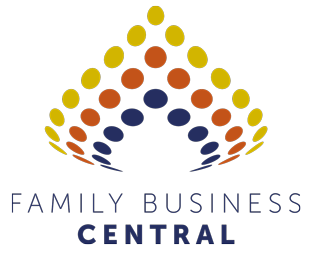
The Different Hats in Family Business
The Different Hats in Family Businesses
Family businesses are complex entities. They have the potential to be extremely profitable and deeply rewarding, both professionally and personally. The level of hard work and emotional investment that goes into them is incredible.
I have the honour of working with a wide range of family businesses in Australia and New Zealand and I often find myself asking my clients the question: “What hat are you wearing?”
Many family businesses literally start because someone had a good business idea and asked a family member to join them logistically and/or financially. From there they built the business, bringing in other family members as needed and doing whatever it takes to get the business off the ground. Everyone works long hours, sometimes with no pay, to get things done … something you can’t do so easily with normal staff.
It’s common to see a strong attitude of, ‘we will do whatever it takes’ and, usually, it works. It’s also normal in a family business for the niceties of management meetings, boards, shareholder meetings etc, to be put to one side; there is a business to run!
And this is fine for a while. However, as the business gets bigger, successful and more complex, it becomes important to evolve and start behaving as a mature business – especially when you need to manage the challenge of growth. Although, it is amazing how big some family businesses become without considering any of this!
A natural evolution
At some point though, the different hats become important. It’s usually at the glorious intersection of change, money, work-load, perceived unfairness, conflict and general disgruntlement that families realise things need to change. This is where I step in and get involved. This shift in thinking is very much a natural evolution in family business. It’s important and if it’s not addressed, it’s difficult for some family businesses to survive.
As someone who has worked with many conflict situations in different private and public organisations, I believe one of the biggest causes of conflict is unclear roles.
Family businesses can be guilty of having unclear roles … in fact they’re absolute masters at it! It’s these roles, or ‘hats’ as I’m calling them, that need to be managed carefully.
To be fair, some of this can’t be helped. Many family businesses will have family members who might simultaneously be sibling, shareholder, director and manager. For founders, they could be, founder, parent, shareholder and director.
This is a reality they can’t change; it’s unique to family business. However, they need to manage it. Sadly, all too often, it’s not managed that well.
At the dinner table you’ll hear families have conversations about how to manage a difficult staff member, what’s going on with the bank loan, a new business opportunity and who’s organised Mum’s birthday?
Then you might hear: “Why the hell did you let that customer have that price?”, “Can you babysit young Steve next Tuesday?” and “Who the hell is going take over this joint when I’m gone?” all before the first course is served!
… and it drives them all nuts.
Hence, we need ‘hat clarity’!
To begin with, the very simple solution often feels fake, and to some degree it is fake, however, stay with it — I promise, it works.
The critical part is to be very clear on what type of meeting you’re having and what hat you’re wearing. The role you are presenting will also define the topics you talk about. Even though in 15 minutes you could be at another meeting with all the same people but discussing different issues because you’re wearing a different hat.
A recent example from a family business …
They were fairly normal in the way they mixed up all the hats in one glorious mess so that no one really knew what conversation they were having. All topics were put on the table, so no one really had any idea what the core conversation was about.
The arguments were phenomenal in both ferocity and volume and it felt like all they did was talk about the business day in and day out — there was never any respite.
Different meetings, different places
The solution was to get very clear on what meetings they were having. First, they chose a specific place, a café in this case, where they only talked about shareholder issues; i.e. where they all wore their shareholder hats. This type of meeting only really needed to be held a couple of times a year.
Next; directors’ meetings. These had to be more regular and again had to be in a unique place with an agenda, financial reports and other structured features, so they could all wear their board hats and talk about nothing else!
For this family, it was exactly the same people in both meetings, just with different hats on.
Finally, management meetings; these had key staff members attending as well as all the directors/shareholders and were set up in a specific room at the office once a week.
You can see how this could seem a little forced, however once in the habit, the hats became more automatic. Quickly family members censured themselves and anyone else who tried to raise a management issue in the directors’ meeting for example; and the arguments reduced immediately.
Dinner conversations were also much more pleasant … in fact they completely banished talking about work at the dinner table, which made a huge difference. The family started spending proper family time together and only talked about work, at work.
It’s not rocket science. It was easy to implement and for that family made an incredible impact on what was already a very successful business — and no one missed the ferocious arguments…
If you’d like to know how we can help your family and business grow and succeed, please call Family Business Central, Philip Pryor on +61 411882064 or +64 027 411 8820 or Bob Selden on +64 027 565 1110

